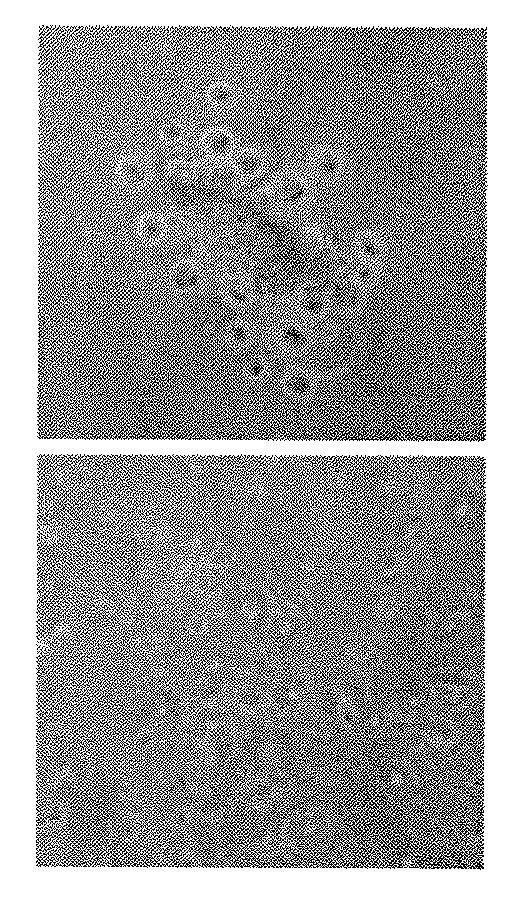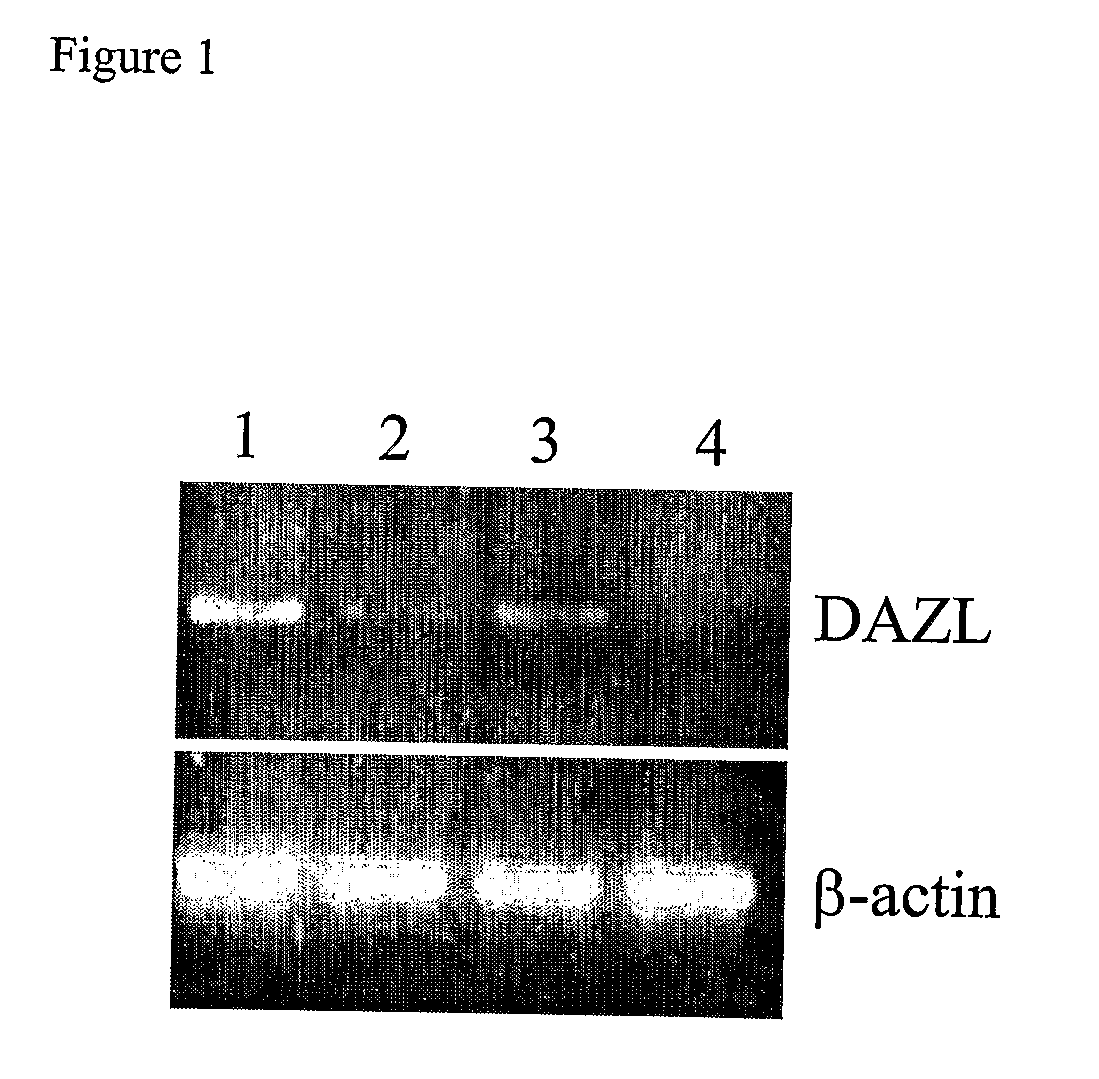Pluripotent stem cells characterized by expression of germline specific genes
a technology of germline specific genes and stem cells, applied in the field of pluripotent or multipotent stem cells, can solve the problems of major biological, ethical and legal problems, limited expansion of cd34+ cells, and the inability to identify and isolate multipotent “embryonic-like” stem cells using known markers
- Summary
- Abstract
- Description
- Claims
- Application Information
AI Technical Summary
Benefits of technology
Problems solved by technology
Method used
Image
Examples
example 1
DAZL Express in Adult Peripheral Blood as Well as in Samples that are Rich in Hematopoietic Progenitor Stem Cells i.e., Bone Marrow, Granulocyte Colony Stimulating Factor Mobilized Cells and UCB Cells
[0213]Expression of DAZL was identified in BM, in G-CSF mobilized cells and in UCB mononuclear cells by reverse transcriptase-polymerase chain reaction (RT-PCR) (FIG. 1). There was no significant expression of DAZL in adult peripheral mononuclear cells (FIG. 1 lane 4).
[0214]The expression of DAZL in mononuclear cells was localized by labeling the cells with a molecular beacon probe (MBP) that targets DAZL transcripts. The MBP probe contains a 6FAM fluorophore and a BHQ1 quencher and is designed to form a stem-loop hairpin structure that, in the absence of a target, quenches the fluorophore. Hybridization with a complementary target causes the hairpin to open, separating the fluorophore and the quencher, thereby restoring fluorescence. First UCB mononuclear cells were fixed on slides and...
example 2
Use of Molecular Beacon Probes to Isolate Cells
[0216]A molecular beacon probe (MBP) is an oligonucleotide that undergoes a conformational change upon hybridizing to a complementary target, resulting in a fluorescent signal. In its native state, the probe is a hairpin with the target sequence in the loop and a sequence that is non-complementary to the target in the stem. A fluorophore is attached to one end of the oligonucleotide, and a quencher is attached to the other terminus. MBPs are optimal for labeling live cells because they exhibit fluorescence upon binding to a target and can be rapidly degraded by cell nucleases with no long-term affect on the cells.
[0217]Different methods of molecular probes can be implemented to reduce reaction background, for example: using two MBPs whose fluorophores form a fluorescent resonance energy transfer (FRET) pair, 2′ o-methyl RNA probe, quenched auto-ligation (QUAL) (Silverman. & Kool. (2005) Trends Biotechnol. 23, 225-230, Tan et al. (2004) ...
example 3
Use of the MBP to Isolate DAZL Expressing Viable Cells
[0220]DAZL labeled cells were reacted with different blood membrane antibodies conjugated with Phycoerythrin (PE) in order to characterize the DAZL-positive ones. They were analyzed by flow cytometry to detect double fluorophore staining of 6FAM and PE. Minor double fluorescence of DAZL and antibodies was observed in each of the examined membrane markers (FIG. 4). The DAZL-positive cells thus appeared mostly negative to the blood markers CD38, CD14 and CD3, and mostly negative to the blood stem cell markers CD133 and CD34 (not shown). They were also negative to CD34, since no DAZL expression was detected in isolated CD34+ cells (not shown).
[0221]The MB probe was delivered into the cells by transfection in order to isolate viable cells expressing DAZL. Cell viability following transfection was over 95% as assessed by Trypan blue staining. Unlike the results following transfection in fixed cells (FIG. 3), the transfected cells exhi...
PUM
| Property | Measurement | Unit |
|---|---|---|
| melting temperature | aaaaa | aaaaa |
| temperature | aaaaa | aaaaa |
| temperatures | aaaaa | aaaaa |
Abstract
Description
Claims
Application Information
 Login to View More
Login to View More - Generate Ideas
- Intellectual Property
- Life Sciences
- Materials
- Tech Scout
- Unparalleled Data Quality
- Higher Quality Content
- 60% Fewer Hallucinations
Browse by: Latest US Patents, China's latest patents, Technical Efficacy Thesaurus, Application Domain, Technology Topic, Popular Technical Reports.
© 2025 PatSnap. All rights reserved.Legal|Privacy policy|Modern Slavery Act Transparency Statement|Sitemap|About US| Contact US: help@patsnap.com



